“We’ve arrived everyone. Off the bus”. Ten journalists, myself and five other CABI staff disembark eager to write our own stories on this, a landmark day, for one of CABI’s latest projects – the Pest Risk Information SErvice (PRISE).
PRISE, led by CABI and funded by the UK Space Agency’s International Partnership Programme (IPP), uses state-of-the-art technology to help inform farmers in sub-Saharan Africa of pest outbreaks that could devastate their crops and livelihoods. 12 July 2018 marked the launch of the project in Kenya.
We’ve travelled a couple of hours from Nairobi to the county of Embu in Kenya. In the village of Mayatta a Plantwise plant clinic goes about its normal business inviting farmers to bring their crops for pest and disease diagnosis and treatment. But today the staff running the clinic also welcomed a group of local and national journalists – cameras and pads of paper in hand.
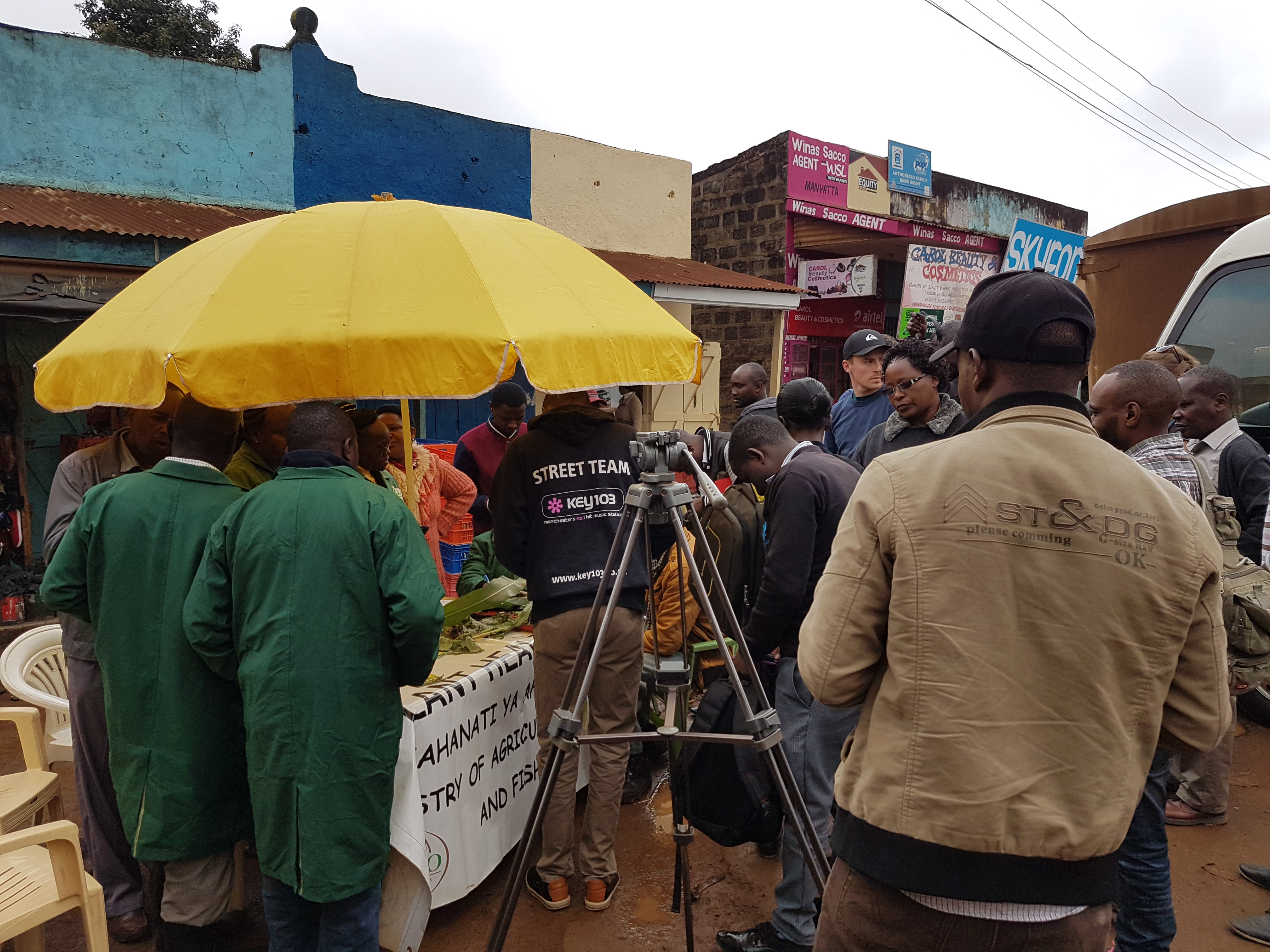
The journalists check out what the plant clinic is all about
After a few minutes meeting and chatting with the plant clinic staff, the journalists crack on with what they came here to do – reporting.
A TV camera is set up and an interview begins with Pauline Muriithi, Plantwise Kenya -Embu County Cluster Coordinator, who explains the important service plant clinics offer to local farmers and for national food security.
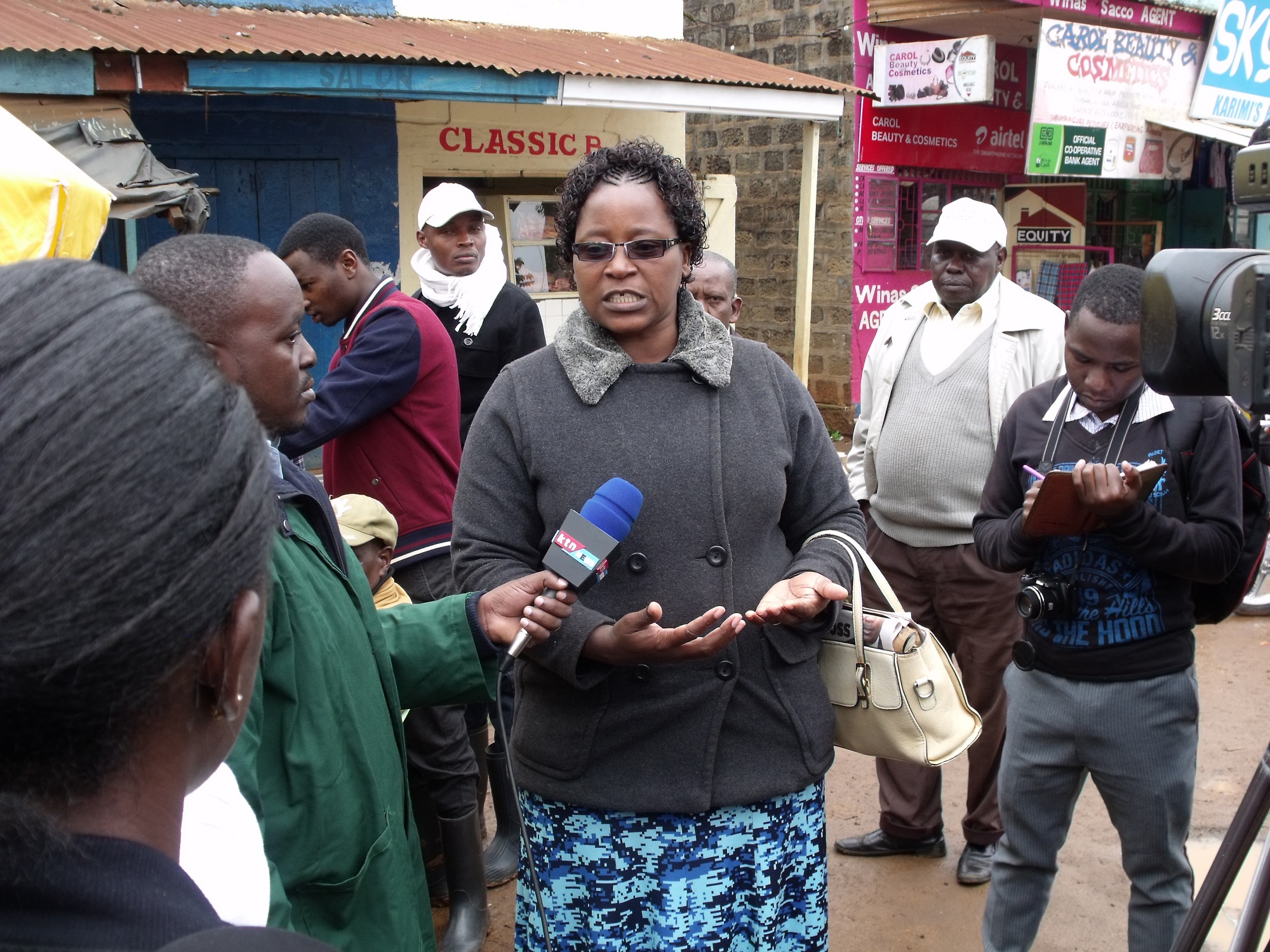
Pauline Muriithi takes questions about the plant clinic
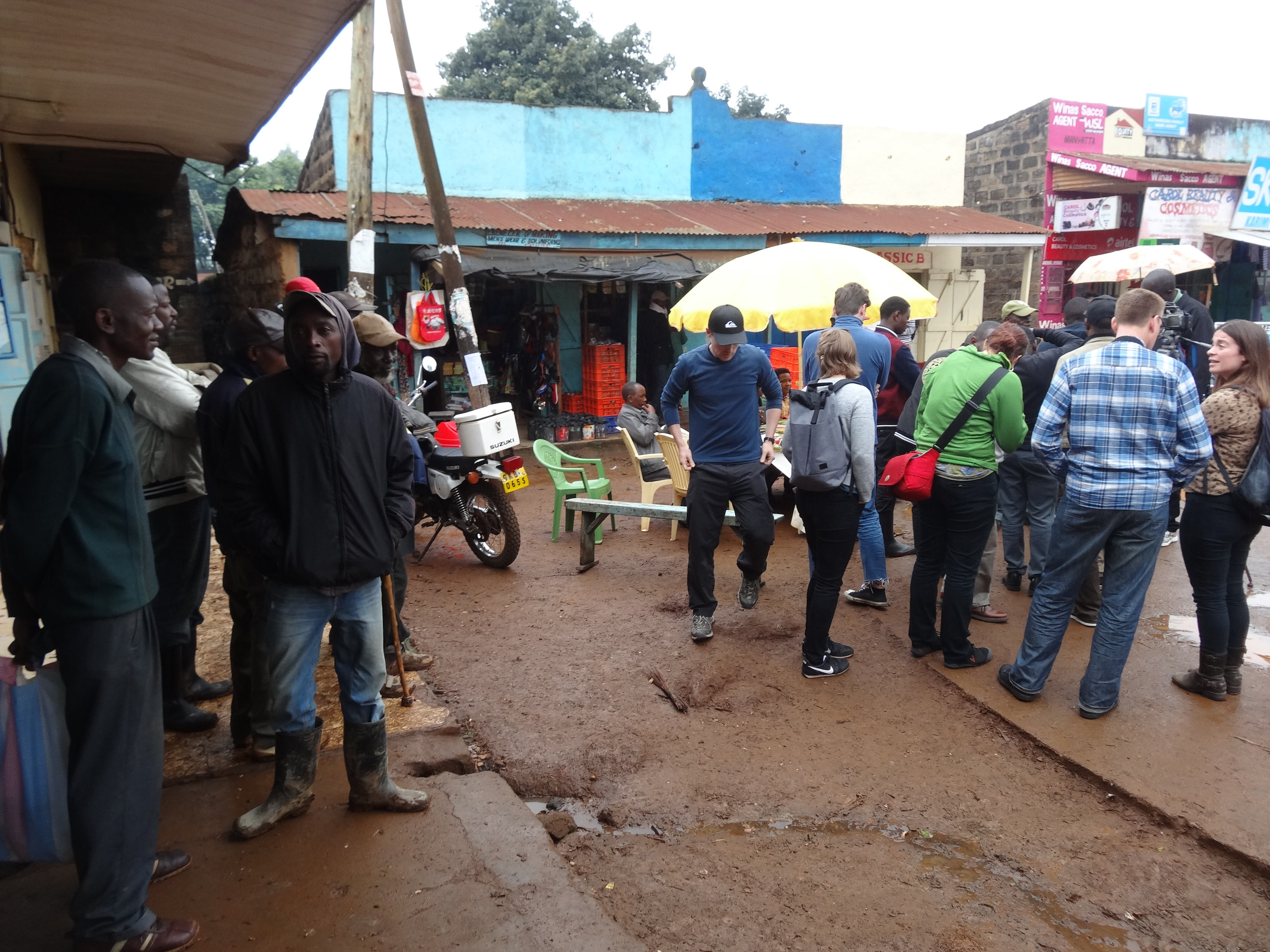
Local people look on wondering what all the fuss is about
Coinciding with the end of our time at the plant clinic, the rain begins to fall. We all jump on the bus and head on to our next location. On the outskirts of Embu town, not far from Mayatta, is the Kenya Agricultural and Livestock Research Organisation (KALRO), a partner organisation on the PRISE project responsible for gathering vital data on crop pests.
There, on a large demonstration plot of maize, recently infested with fall armyworm, the journalists prime their pens for more information on the project.
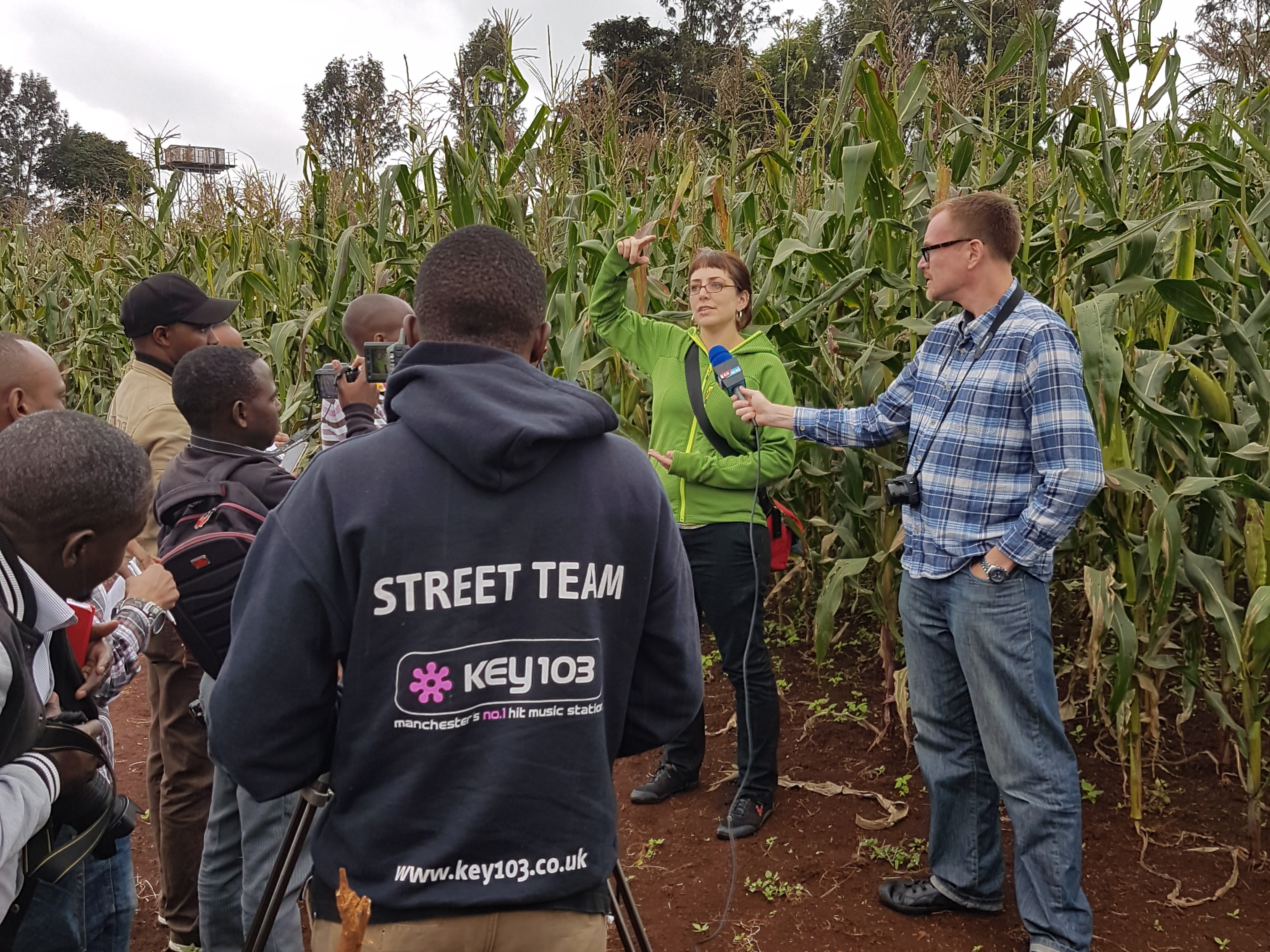
Cambria Finegold, Global Director, Knowledge Management, CABI, takes questions on PRISE
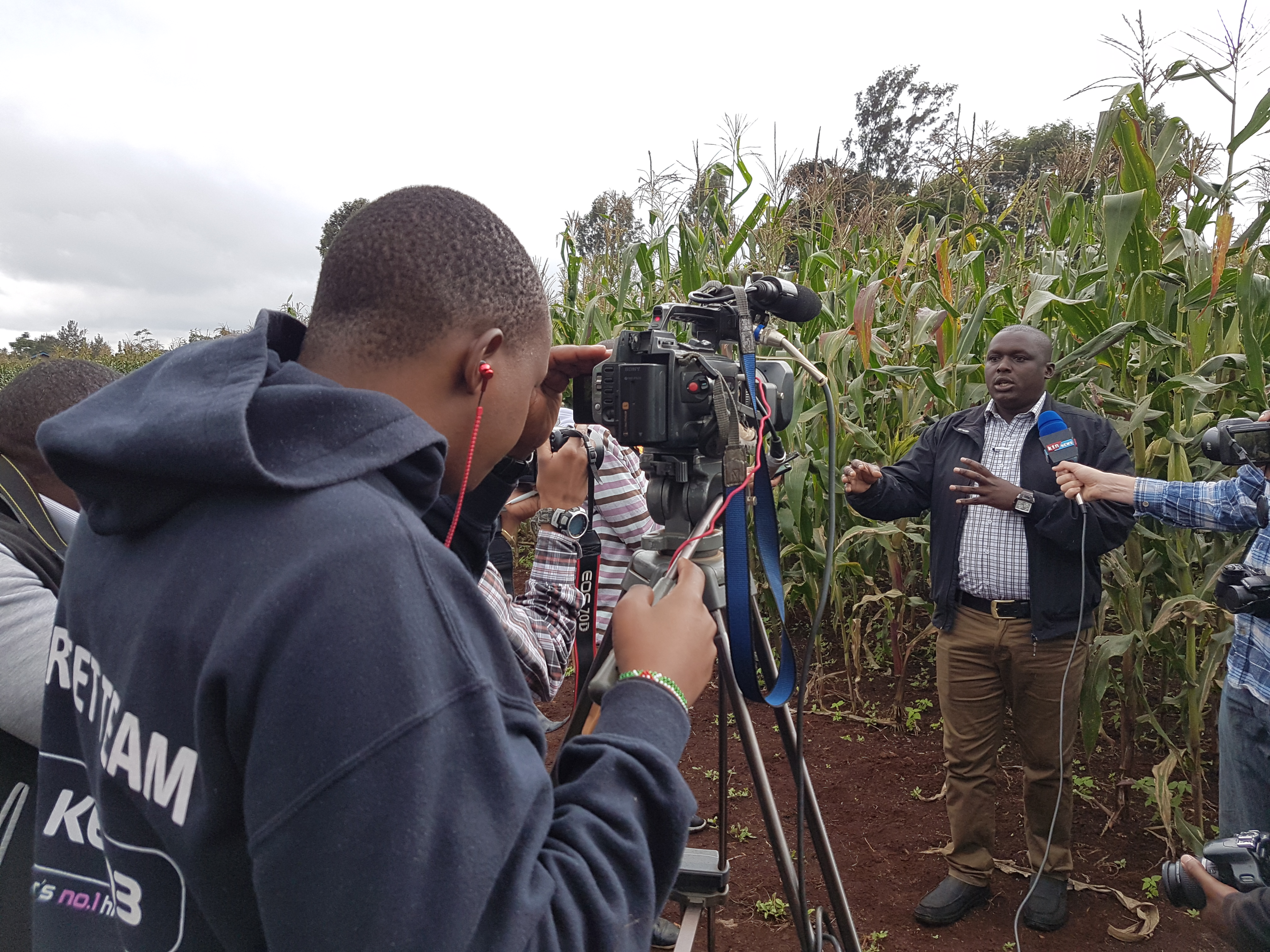
Dr Johnson Nyasani, Senior Research Scientist Entomology, KALRO Embu, takes questions on PRISE

The maize leaf damage caused by fall armyworm provides a fitting backdrop
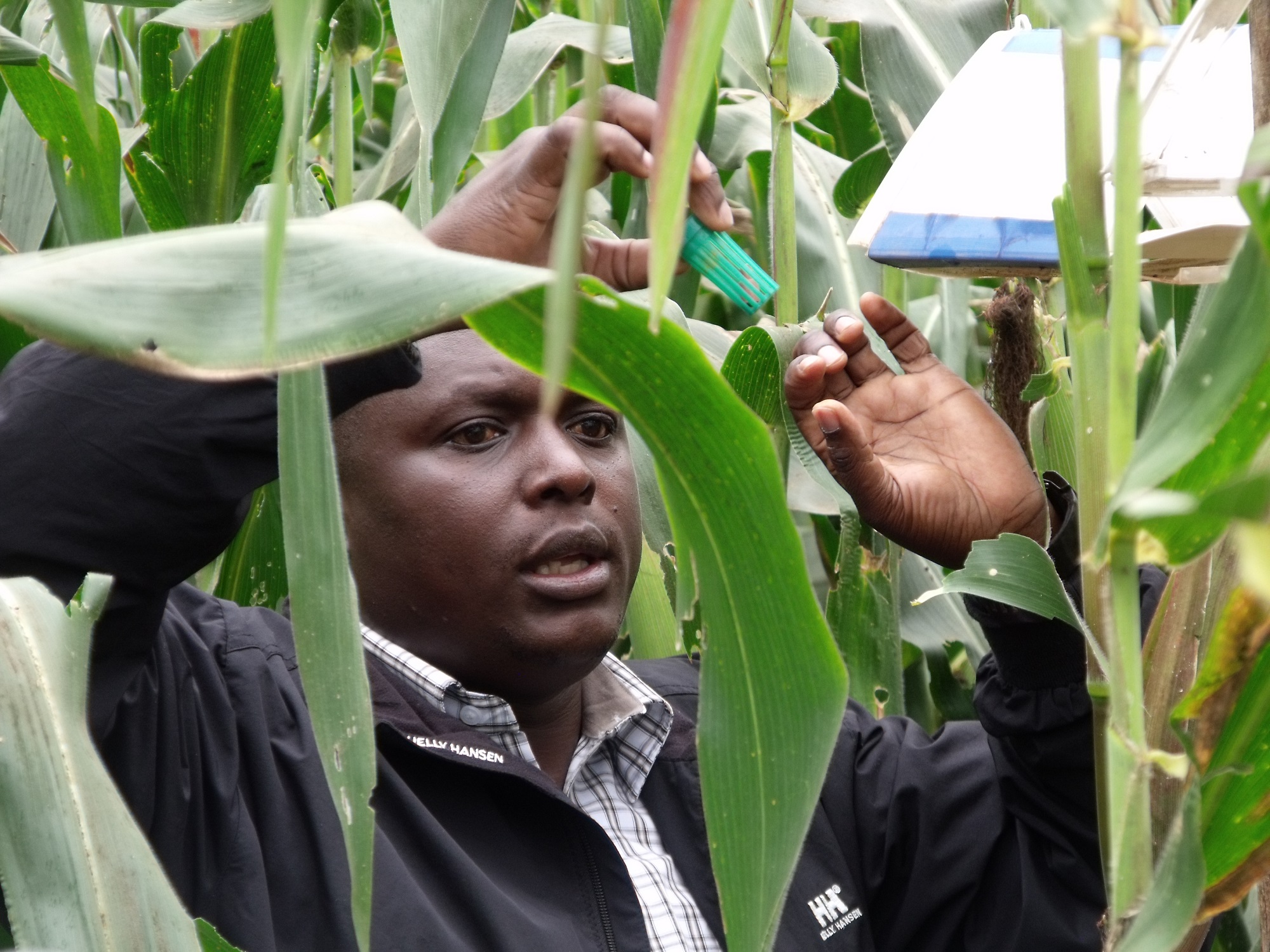
Pheromone sticky traps catch moths for assessing pest life cycles
Our final stop of the day is to a farmer called Madam Winfred. After coming to terms with her smallholding suddenly becoming the centre of media attention she led us down a steep and precarious path to show us her role in PRISE.
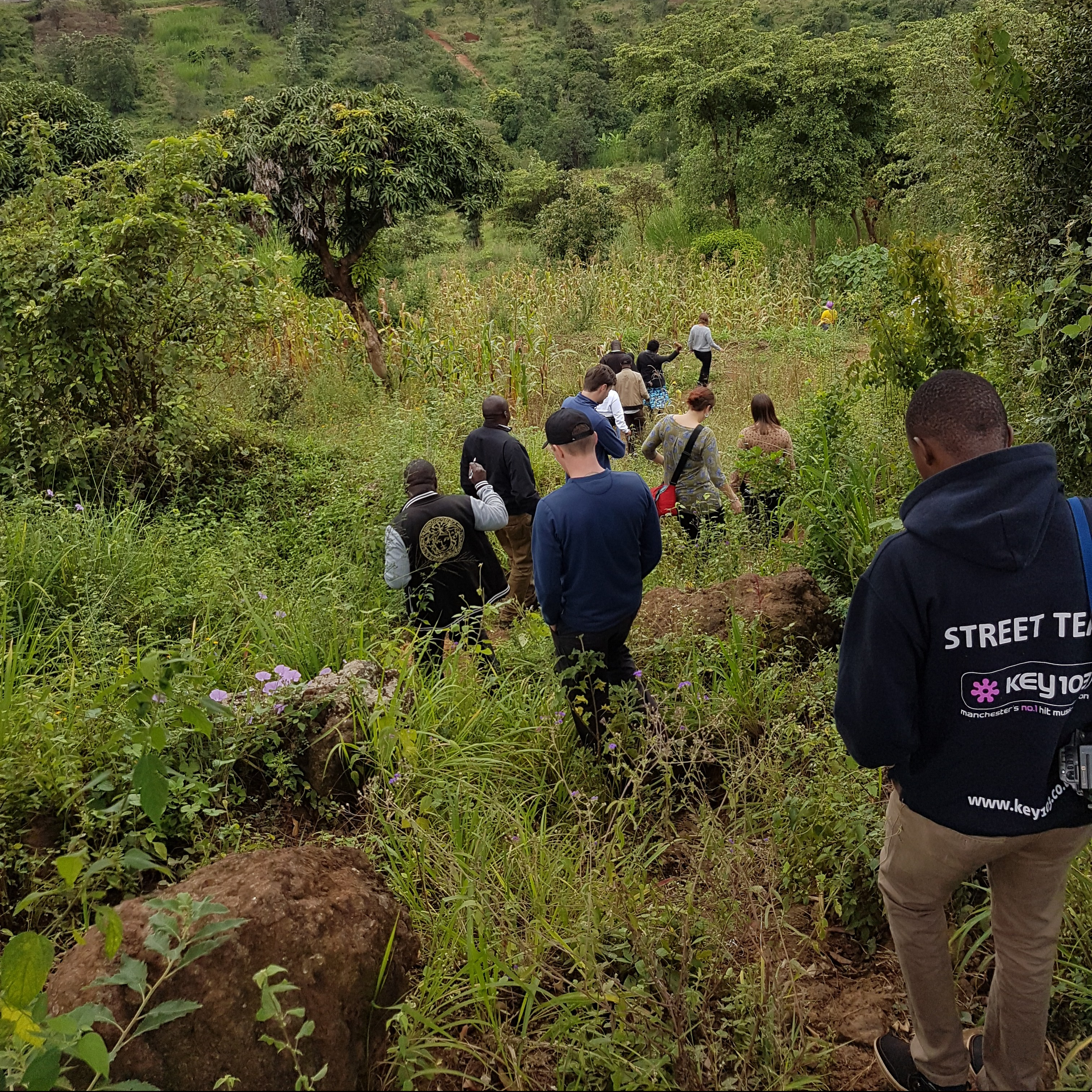
Everyone is intrigued where Madam Winfred is leading us…
We arrive at seemingly another ordinary field of maize, however strung up amongst the plants are the same pheromone traps Dr Nyasani showed us earlier at KALRO Embu. Madame Winfred is part of the testing phase of PRISE.
By hanging these simple devices in her crop she is contributing a huge amount to our understanding of how pests infest crops, important for improving satellite forecasts for future pest outbreaks.
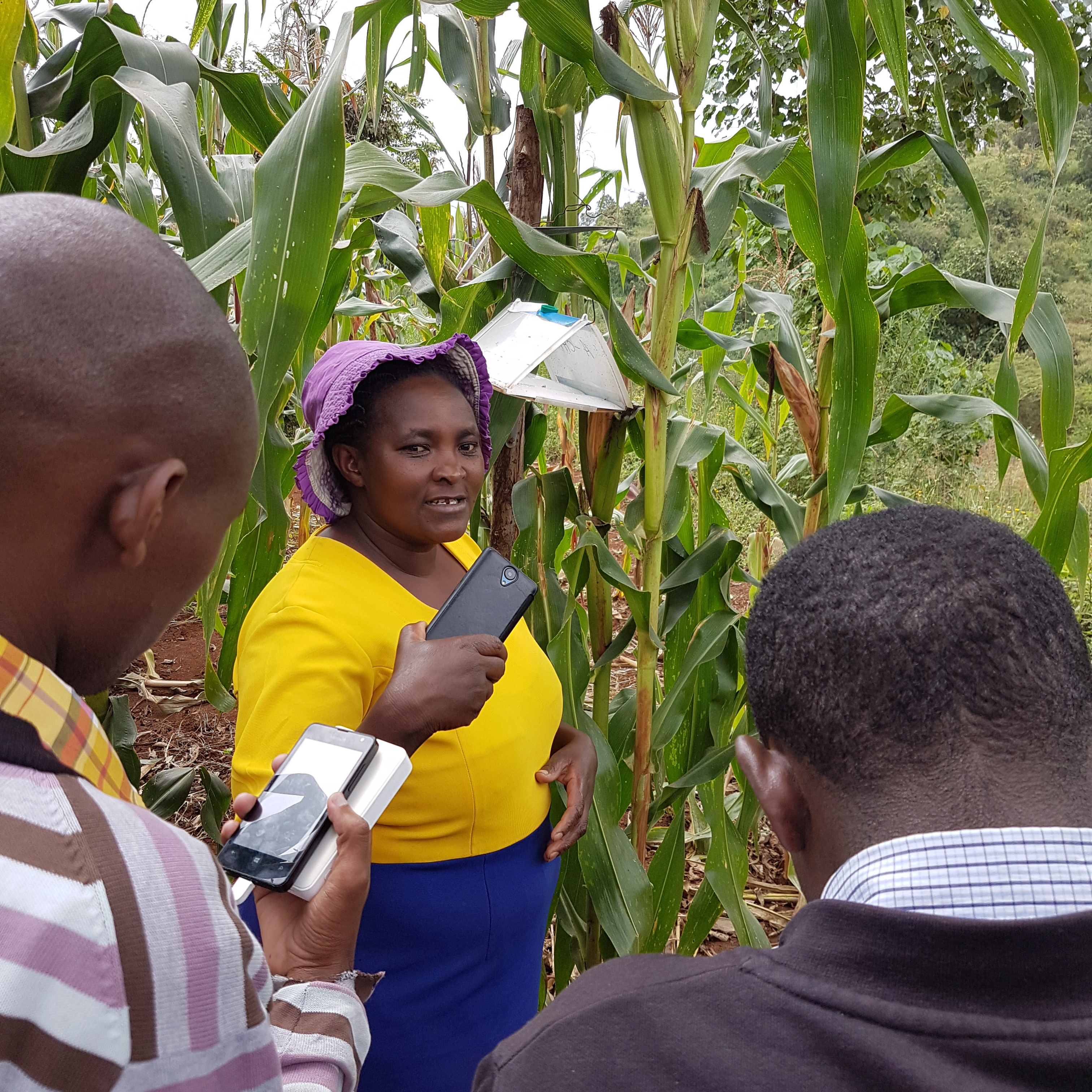
The journalists put pen to paper one last time to capture Madam Winfred’s pride at moving one step ahead of the pests
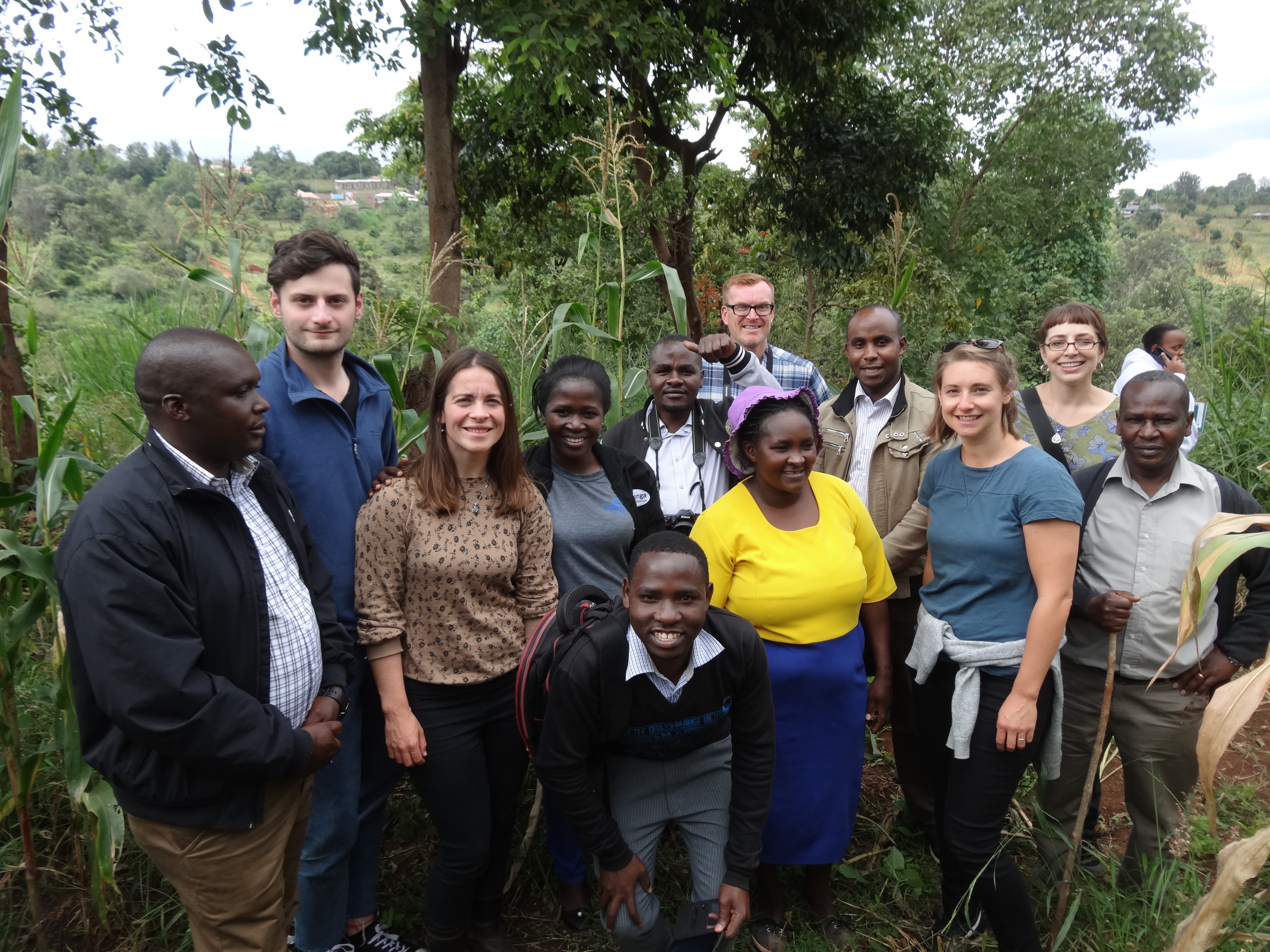
The obligatory team photo wraps up a hard day’s investigating!
For more information on the project launch, click here
For more information on the project itself, click here
To view some of the media coverage of the launch, watch here (start from 10:34)
2 Comments
Leave a Reply
Related News & Blogs
World Food Day: How can data science and modelling help smallholders adapt to climate change?
Data science and modelling are relatively new concepts when it comes to farming. For centuries, smallholders have carefully passed down agricultural skills from generation to generation. They depended on this knowledge. And stable seasons and weather meant this information remained relevant for years.
14 October 2022

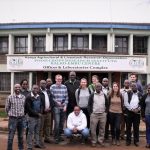
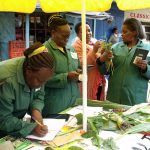
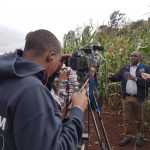
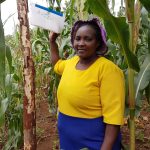

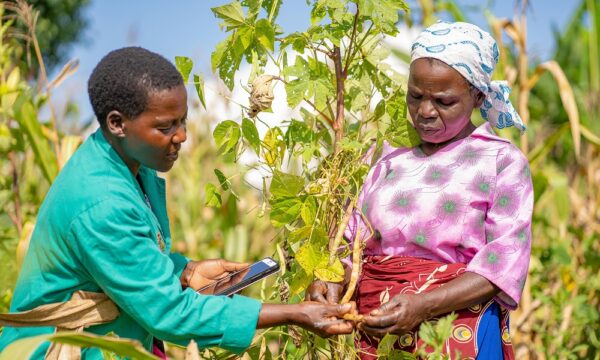
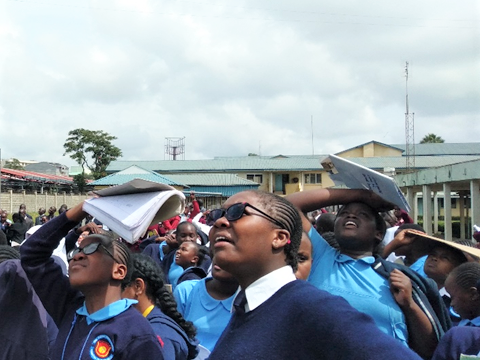
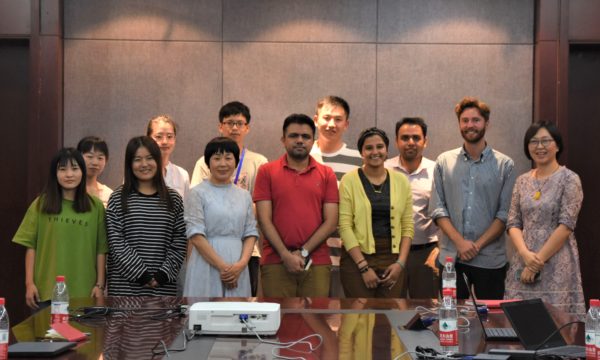
Reblogged this on The Plantwise Blog.
[…] Commodity crops, Crop health, Pests and diseasescrop protection., Food security, nematodes Previous Article Plant clinics, pests and pads of paper Next Article National Parks […]